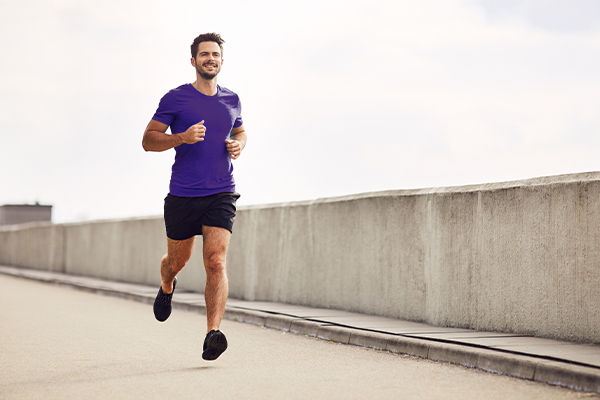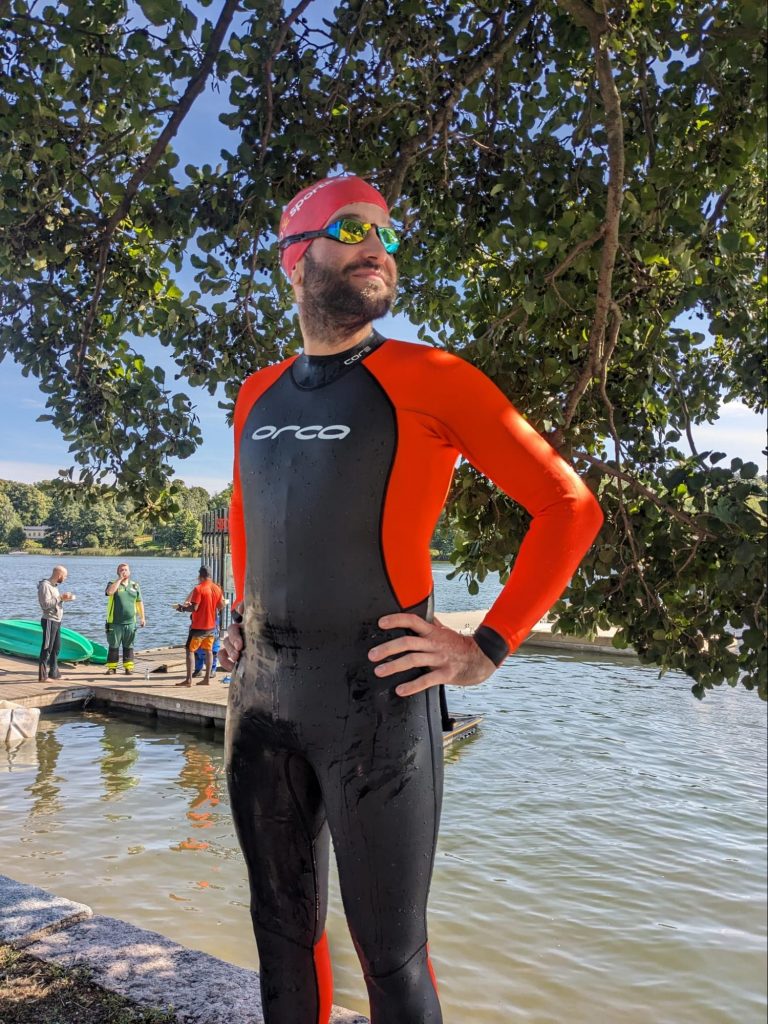There are two types of athletes in the endurance sports world: those who train with a coach and those who don’t know how much more successful they can be by working with a coach. Fortunately, Humango’s AI coaching app gives athletes ranging from experienced competitors to novice participants access to the benefits and guidance of a customized, flexible, and effective training program. As the following stories highlight, Humango’s app can unlock your best performances whether you’re a runner, cyclist, or triathlete.
The First-Timer
“Humango is a fantastic way to structure training,” says Mathew Hann, who trained for his first 70.3 triathlon using the Humango app. Instead of generalized workouts, the coaching AI adjusted his training loads and intensities for what he could do. The result was a plan that didn’t grind him into the ground but pushed him harder than he may have pushed on his own. Posting a time of 4:42, he finished 13th in his age group. Hann’s result speaks to the accelerated learning curve that a coach provides.
The World Traveler
Przemek, a 40-something professional from Poland, used Humango AI to train for his first sprint triathlon last spring. His finish of 1:33 kicked off an aggressive calendar of goal events that will carry him into next year, ending with a 70.3 triathlon despite a heavy business travel schedule. “Next one would be a half distance 70.3 in spring 2024,” Przemek says. “I may have to take 5-9 business trips with some training to be done in other EU countries.” That Przemek can see a pathway to training for and compete in a half-iron-distance triathlon despite his travel schedule speaks to another benefit of an AI coach: adaptability. With Humango’s ability to restructure workouts daily, Przemekcan trusts that he’s on track to be ready to go on race day, no matter how haywire his schedule gets.
The Pain-Free Runner
“I’ve lived with running-induced knee pain my entire adult life, but with Humango’s strength training (guidance), I’m finally running knee-pain-free!” claims Bethany Thibou of Milwaukee. Strength training is a core ingredient in any Humango endurance program, and as Bethany’s experience shows, there’s a good reason for that. A strong core and body serve as the steady platform for all endurance sports. Humango athletes can all expect a comprehensive strength-training component to their program, one designed to produce exceptional results on the course, not in the gym.
The Multi-Tasker
An oft-overlooked benefit to working with a coach is the coach’s ability to incorporate training for multiple sports simultaneously. Take the case of Humango athlete, Billy Richards. “With Humango, I no longer have to go through the mental process of creating plans since the training automatically fits my schedule,” he says. “It helps to create plans when training for different events at the same time, which is a game changer for me. Currently, I’m training for a half marathon event as my A race, but I’m doing some cyclo-cross racing too.” With Humango managing his workloads and intensities automatically, Richards is assured that his cyclo-cross training and racing will contribute to making him a faster runner overall.
The Team Player
For Guy Stapleford, Humango’s AI data has helped his longtime endurance coach, Pav Bryan, turbocharge his training — and his results. “I’ve been working with a coach for a couple of years now, but with Humango’s AI, we’ve been able to take my training up a gear,” he says. “Humango adds a huge amount of intelligence to how I work with my coach, and it has enhanced my training plan and the results we see from it.” Humango’s role as Stapleford’s assistant coach is another example of how Humango AI can elevate the human-coach-to-athlete dynamic with improved data, faster adaptability, and more flexibility. Stapleford’s coach can spend more of their energy coaching the mental side of Stapleford’s athletic journey while leaving much of the workout planning to Humango’s AI.
Taken together, Humango’s AI coach can help athletes through a wide range of sports, training options, setbacks, recoveries, and multi-disciplinary focuses. As these Humango athletes can attest, using Humango won’t shrink your world of possibilities to fit its intelligence. It will expand your potential and give you the confidence to set more ambitious goals.
















